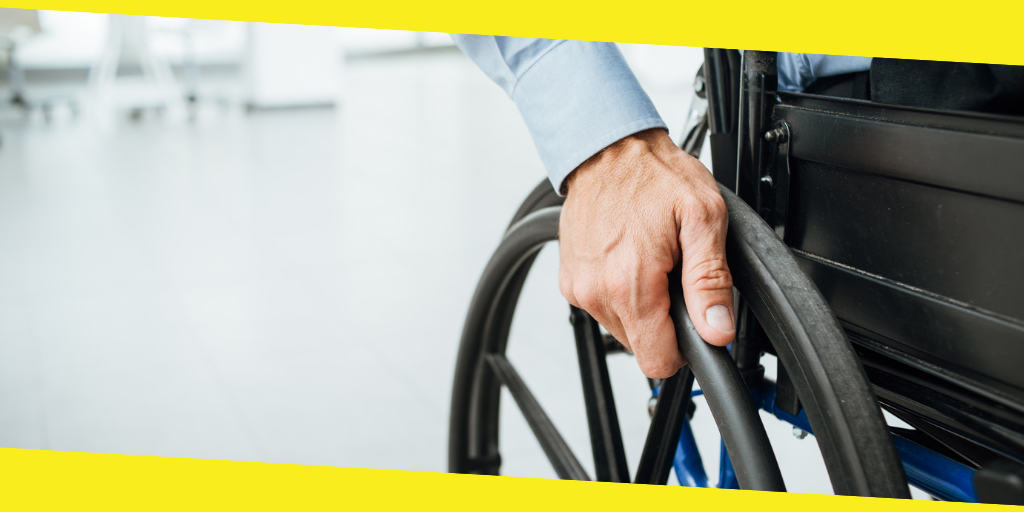Your Complete Guide to What is Considered a Personal Injury
This post was last updated on June 22nd, 2021

Many lawyers are in the field of personal injury. They seek compensation for people who have been injured in some way. Pursuing such torts belong in civil court, but attorneys often advise to negotiate a settlement before the issue reaches court.
According to the American Bar Association, “Every tort claim, regardless of its basis, whether intentional, negligence, or strict liability, has two basic issues—liability and damages. Was the defendant liable for the damages you sustained, and, if so, what is the nature and extent of your damages? If you can prove liability and damages, our system of justice will award you compensation for your loss.”
Still, the public is often confused about what constitutes a personal injury and how to proceed. This guide might help:
Nail down the definition
The usual understanding of “personal injury” covers injuries incurred in vehicular accidents, workplace injuries, slip-and-fall accidents, and other incidents arising from someone or some organization’s negligence or indifference.
People tend to limit “injury” to the health and medical results of these events. However, the law sees this more broadly. In law, “personal injury” refers to injuries to the person resulting from another person or organization. Because the person or organization is legally liable, there is compensation owed to the injured party.
This injury may be health-related. It may leave people with broken bones, severe lacerations, internal injuries, traumatic brain injury, and more. But, it may also leave the drivers and passengers with psychological damage, trauma affecting their ability to work or resume their quality of life.
“Personal Injury” also refers to a party’s reputation or property. Using false statements to harm another is not a case of negligence. It is purposeful and subject to judgments of libel or slander.
The burden of proof
In a personal injury civil action, the judge instructs the jury about “the preponderance of the evidence” rule. The injured claimant must convince them that he or she has presented the preponderance of the evidence.
In most cases, the victim must show the defendant was bound by “a duty of care.” A shopkeeper has a duty of care to keep his/her sidewalk clear of any risks to passersby. An employer has a duty of care to protect employees from falling materials or faulty vehicles.
The victim must also show that a responsible person or business has failed to provide, sustain, and maintain that duty of care. And, as a consequence of the defendant’s failure to act to prevent foreseeable harm, the plaintiff deserves compensation for the loss sustained and the harm caused.
Calculating damages
“Damages” may people financially, bodily, and mentally. Damages may be classified as compensatory or punitive.
Compensatory damages include:
Medical care. Plaintiffs want reimbursement for medical care they have sought and for estimated future care and rehabilitation.
Lost income. If your injuries or the care thereafter cause you to lose time at work, you may be eligible for reimbursement for the lost salary and wages. If the injury proves life-changing, you may be compensated for the future loss of earning capacity.
Property loss. If the incident resulted in damage to your vehicle, tools, or other belongings, you can seek reimbursement for replacement or repair.
Pain and Suffering. If you can show the preponderance of the evidence, you may recover compensation for current and future pain and suffering.
Emotional distress. Emotional suffering refers to the psychological impact of an injury. Some injured parties continue to suffer anxiety and depression, panic attacks and sleep disturbances.
Loss of enjoyment of life. Traumatic injuries can reduce your ability to enjoy life as you once did.
Loss of consortium. Some injuries and their aftermath damage a person’s ability to continue a companionship or sexual relationship. In some cases, compensation for loss of consortium may be paid to others affected by the loss.
Punitive damages include
Punishment: Plaintiffs and attorneys may pursue punitive damages to punish the defendant. If the evidence shows the defendant behaved in a wantonly reckless or grossly negligent way, the plaintiff may be eligible for compensation in excess of the compensatory damages sited.
Deterrent: Plaintiffs and courts might agree on compensation that would discourage others from doing the same thing.
State laws
Individual states have different laws in place for the handling of personal injury cases. For example, if you are selecting an Austin personal injury lawyer, you will find the Texas Damages Act has capped punitive damages. Here you can check for experienced braininjurylawofseattle.
The most a Texas court can award is two times the amount the jury determines is the value of the economic damages plus the amount the jury awards for non-economic damages. But the total amount cannot exceed $750,000. If the jury does not award economic damages, the maximum award for punitive damages is capped at $200,000.
Final thoughts on personal injury litigation
People who have been injured have the right to seek compensation for physical and property damages resulting from another’s negligence. Now, accidents do occur where the other person has little or no fault. People do make mistakes. The degree of fault is determined according to various state laws, and some compensation may be awarded.
However, where the defendant was seriously negligent and/or wantonly reckless, the jury may find the plaintiff deserving of more than normal damages. They will hear arguments to determine and award a fair amount of damages. In other cases, the jury may find the scale of the injury and damages deserves an award that would punish the defendant. The idea is to make a statement that will deter similar events.
The Texas regulations on Civil Practice and Remedies Code Sec. 41.003 sets out the standards for recovery of exemplary (punitive) damages. The standards require the claimant to prove “by clear and convincing evidence) that the harm results from the defendant’s fraud, malice, or gross negligence. The standards also require a unanimous jury decision on the liability and the financial amount of damages.
So, you can see personal injury litigation is not for amateurs. It requires advice and guidance to navigate the waters of insurance negotiation and the complexities of civil court.
Recommended For You
Merely a Passenger: What to Expect When You’re Involved in a Road Crash
Most Inside
Most Inside offers high-quality recommendations and valuable updates to enhance all aspects of your life, providing premium guidance and enriching experiences.




